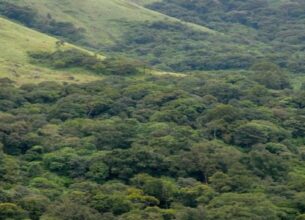Ecologically Sensitive Zones
20, Jan 2023

Prelims level : National Conservation & Mitigation
Mains level : GS-III Conservation, Environmental Pollution and Degradation, Environmental impact assessment.
Why in News?
- The creation of the Ecologically sensitive zones (ESZ) has sparked protests in Kerala and can be a hint of what is likely to occur in other parts of the country.
What’s the issue?
- The problem begins with a notification that ought to have been community-specific but which a ministry offered as a ‘one size fits all’ solution.
Background:
- Protected areas cover 5.26% of India’s land area as 108 national parks and 564 wildlife sanctuaries notified under the Wildlife (Protection) Act 1972 (WPA).
- These protected areas are based on the ‘fortress conservation model’. For example, activities permitted in ‘reserve forests’ are not permitted in national parks and wildlife sanctuaries.
- Surrounding these protected areas is an area of approx. 3.4% of the country’s land, falls under the ESZ regime.
- Governments have notified 341 ESZs in 29 States and 5 UTs, while another 85 ESZs are awaiting notification.
- Together, protected areas and the ESZs cover 8.66% of India’s land area.
What are ESZ/Ecologically Fragile Areas (EFA)?
- ESZ is intended to protect ‘protected areas’ – national parks and wildlife sanctuaries – by effectively creating insulating layers around such protected areas where humans and nature can be at peace with each other.
- Objectives of creating ESZ:
- To create a shock absorber by regulating and managing the activities around protected areas.
- To serve as a transition zone between areas of high protection and areas of lower protection.
- Notified and regulated by: They are notified by the Union Ministry of Environment, Forest and Climate Change (MoEFCC) and regulated under the Environment Protection Act 1986 (though the EPA does not mention the word ‘ESZ’).
- Criteria to designate ESZ:
- Based on species (endemism, rarity, etc)
- Based on the ecosystem (sacred groves, frontier forests, etc)
- Based on geomorphological features (uninhabited islands, origins of rivers, etc)
- Extent of ESZ:
- An ESZ’s distribution can vary in breadth and extent. For example, the extent of ESZ from the boundary of a protected area ranges from 0 to 45.82 km (in Pin Valley National Park, HP).
- The ESZs span notified forests outside protected areas, most of which could also come under gram sabhas’ jurisdiction under the FRA.
Issues with ESZ:
Not in sync with FRA and PESA:
- The Forest Rights Act (FRA) 2006, recognises the customary and traditional rights (both individual and collective) of forest-dwellers on forest land, including inside protected areas.
- Under the FRA, a new category of forests called ‘community forest resource’ (CFR) has been created and has to be managed by the Gram Sabhas.
- Similarly, the Provisions of the Panchayat (Extension to Scheduled Areas) Act (PESA) 1996, empower Gram Sabhas to safeguard and preserve community resources on forest and revenue lands in Scheduled Areas.
- However, the MoEFCC has shown no inclination to amend the Indian Forest Act 1927, the Wildlife (Protection) Act and the EPA 1986 to comply with PESA and FRA.
What is the case of Kerala?
- The Western Ghats (WG) cover 48% of Kerala and nearly 30% of the state is covered by forests.
- There is also a network of lakes, canals and wetlands, as well as a 590-kilometre-long coastline, all of which are governed by a set of environmental conservation laws.
- This leaves little space for its 3.5 crore population, which has a population density of 900 people per square km (much higher than the national average).
- According to an SC directive, at least one km from the boundary of every protected area in Kerala should be marked as ESZ. The Kerala State Assembly recently unanimously passed a resolution urging the Central Government to exempt the state’s human settlements, farmlands, and public institutions from the ESZ’s scope.
Way Forward:
- Mining and other activities have long depleted the nation’s natural resources.
- As a result, the government’s role should not be limited to that of a “facilitator” of economic activity.
- It must strive to achieve long-term sustainable development by balancing economic development, environmental conservation and the rights of forest dwellers.







